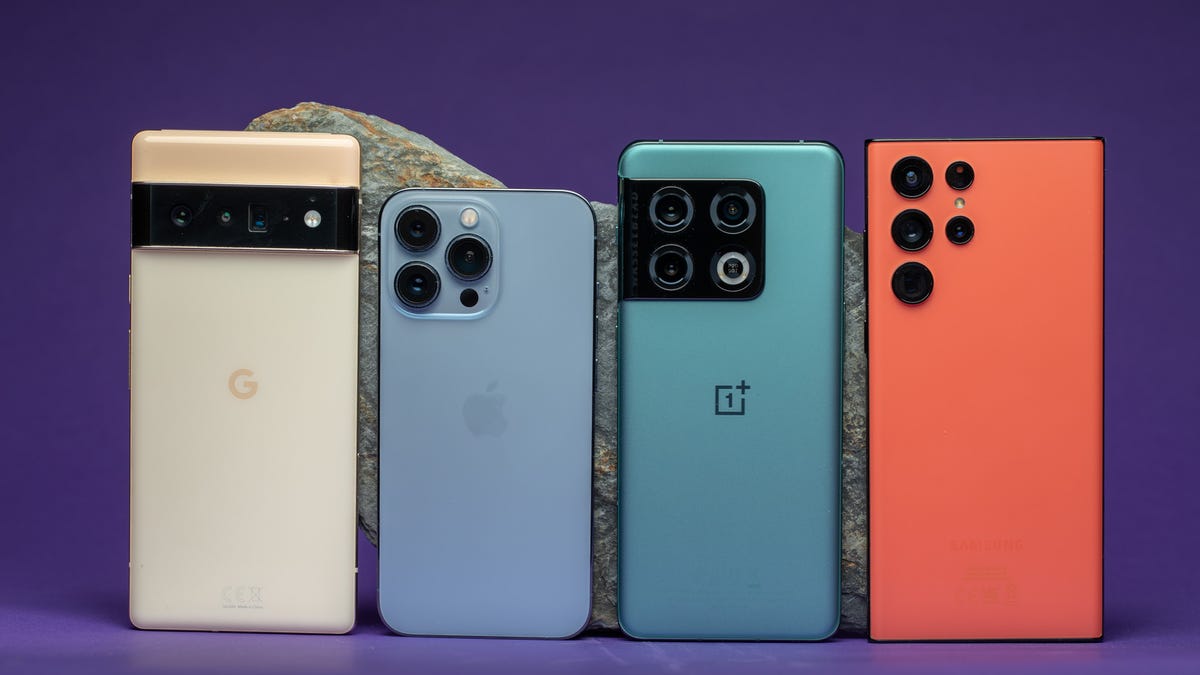For most parents, figuring out whether to give your child a smartphone can be a challenging task.
With many kids now adept at navigating games on their parents’ phones from infancy, the question of receiving their own can quickly become a matter of when and not if.
Indeed, according to a 2021 study, more than two-fifths (42%) of children now own their own phone by age 10. By age 12, that figure is 71%; by age 14, it’s 91%.
That doesn’t mean you need to relinquish control as a parent, however. In fact, by having the conversation early, both you and your child can reach an understanding on timelines and expectations around phone ownership, and any trial runs that might be needed first.
“Giving your child their first phone is a big moment for many parents and carers, and one you can use as an important opportunity to talk about what they want to use it for, when they want to use it, and what the expectations are for your family,” Will Gardner, director at the U.K. Safer Internet Centre, told CNBC Make It.
How to decide if your child is ready
Before deciding whether or not to give your child a smartphone, it’s important to consider if they are ready for one.
More often than not, that decision will hinge not on your child’s age, but on their level of maturity. It can therefore be worth thinking about a few questions or developmental milestones to help guide your response.
- Who is initiating the conversation around phone ownership, yourself or your child?
- How responsible is your child? Can they be trusted to take care of their belongings and use a phone appropriately?
- How beneficial would a phone be for your child, both in terms of their safety and their social development?
- How sensitive is your child and how do they respond to criticism?
- How well does your child cope with limits on screen time and social media use?
“The current evidence doesn’t support a specific age at which a smartphone is or is not recommended,” Megan Moreno, a pediatrics professor at the University of Wisconsin said. “Using a milestone approach is likely a better way to assess a child’s interest and readiness for a phone.”
There are no hard and fast rules for those milestones, and they can be defined either independently by you as a parent, or via an open dialogue with your child. However, the American Academy of Pediatrics “PhoneReady Questionnaire,” launched earlier this year in collaboration with telecoms company AT&T, can help guide the discussion.
Alternative options to a smartphone
If you determine that your child is not yet ready for a smartphone, there are a number of alternative options that could help satisfy their requests while giving you piece of mind as a parent.
A simple mobile phone, or “dumb phone,” can allow your child to message and make phone calls, while having little or no computing and internet capabilities.
For a little more sophistication, models like the Gabb phone include a camera, GPS and a selection of curated apps, without allowing for potentially riskier functions such as picture messaging or group texts.
Donald Iain Smith | Moment | Getty
A smart watch, meanwhile, can provide access to a range of tools — such as messaging, calls, GPS and some apps — while having the added benefit of being attached to your child, helping to mitigate loss or theft.
Alternatively, if you prefer to not give your child their own device, you may choose to grant them use of your phone at select times or around the house, or you may allow them to hotspot connection from a non internet-enabled device under your guidance.
If you’ve already given your child a phone
If you’ve already allowed your child to have a phone, or are considering one as the next stage, there remain a number of ways you can limit or monitor their use.
Parental control tools like Bark and Qustodio can allow you to block access to specific websites while providing alerts for issues such as bullying, predators and sexual content.
Monitoring tools, including inbuilt screen time monitoring apps, meanwhile, can help limit your child’s time spent on specific apps or functions, limiting addictive tendencies.
Most important, however, is to have a conversation with your child about your shared expectations for their phone use, and how those might evolve over time.
“Establishing rules and expectations is key,” said Moreno, “but revisiting those rules and expectations at reasonable intervals is probably as important and often overlooked.”
Meantime, if you start to notice a shift in your child’s behavior or see cause for concern, be ready to start a discussion and show that you are there to provide support.
“If something does go wrong and you begin to see a change of behavior in your child, whether they are spending more or less time on devices than usual, being upset after time on their phone or avoiding gatherings at school or with their friends, then you should firstly look to reassure them that you are there to listen and help without judgement,” Gardner said.
“Once you know the details you can then decide how best to take it forward – whether that be seeking further support from the school or police.”







/cdn.vox-cdn.com/uploads/chorus_asset/file/24041962/226301_Best_Phone_Lede_Update_WJoel_001.jpg)

